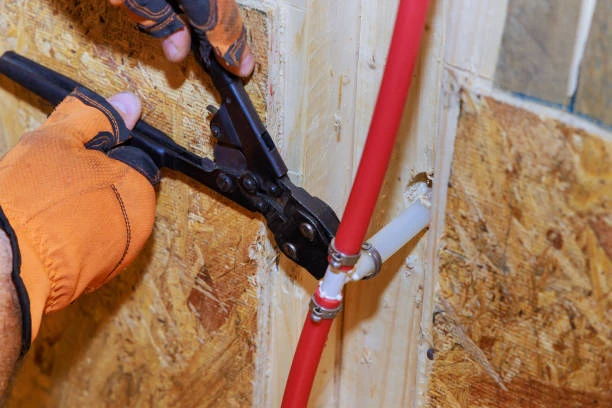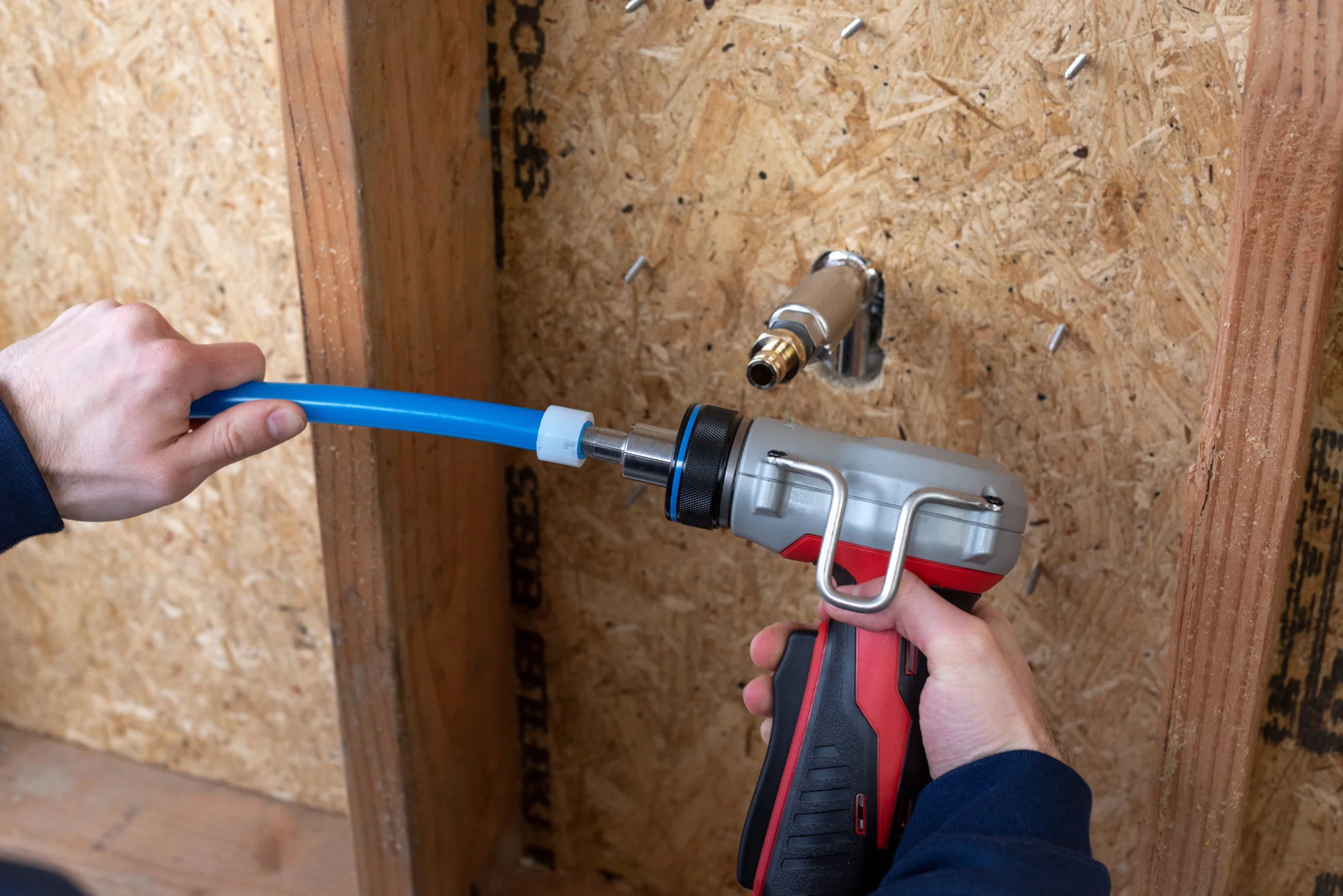When working with PEX pipes, proper installation is key to ensuring a leak-free and durable plumbing or heating system. One of the essential tools for this job is the PEX pipe clamp cinch tool or crimping tool. These tools are designed to secure stainless steel clamps tightly around PEX tubing, preventing leaks and ensuring long-lasting performance. In this article, we’ll explore the importance of using the right crimping tool, how it works, and what to look for when choosing a PEX pipe clamp cinch tool for your projects.
What Is a PEX Pipe Clamp Cinch Tool?
A PEX pipe clamp cinch tool, also known as a PEX crimping tool or PEX clamp tool, is a specialized hand tool used to attach stainless steel clamps to PEX pipes. These clamps are essential for ensuring that the fittings remain securely in place, preventing leaks and ensuring that the system functions properly. Whether you are installing a new water line or repairing an existing one, the cinch tool helps you complete the job quickly and effectively.
How Does a PEX Pipe Clamp Cinch Tool Work?
The PEX pipe clamp cinch tool operates by compressing a stainless steel clamp around the PEX pipe and the fitting, creating a secure seal. The tool’s mechanism ensures that the clamp is tightened enough to hold the fitting in place without damaging the PEX pipe itself. Here’s how the process works:
- Position the Clamp: Place a stainless steel clamp around the PEX pipe and fitting.
- Position the Tool: Insert the tool’s jaws around the clamp.
- Cinch the Clamp: Squeeze the handles of the tool to compress the clamp tightly around the pipe.
- Check for a Tight Seal: The clamp should be securely fastened, ensuring no leaks occur.
Using the right cinch tool is critical for achieving a secure connection. If the clamp is not tight enough, it can result in water leaks, while over-tightening can damage the PEX pipe or fitting.
Why Is a PEX Pipe Clamp Cinch Tool Important?
Using a PEX pipe clamp cinch tool is crucial for ensuring the integrity of your PEX piping system. Here are several reasons why it’s an important tool in your toolkit:
1. Leak Prevention
The main job of the cinch tool is to secure the stainless steel clamp tightly, preventing leaks from occurring in your plumbing system. If the clamp isn’t secured properly, it can result in water leaks that could damage walls, floors, and furniture, leading to costly repairs.
2. Durability and Reliability
PEX systems are known for their longevity and low maintenance needs. By using the right cinch tool, you ensure that the fittings remain secure and the system stays leak-free for years. This is especially important in high-demand applications like water supply and radiant heating systems.
3. Ease of Use
PEX clamp cinch tools are designed to be easy to use, even for people without extensive plumbing experience. They are lightweight and feature ergonomic handles, making them comfortable to use for extended periods. This allows for quicker and more efficient installations and repairs.
4. Cost-Effectiveness
Using a high-quality cinch tool can save you money in the long run. Properly secured PEX systems require fewer repairs and maintenance, reducing the overall costs associated with your plumbing or heating system.

Types of PEX Pipe Clamp Cinch Tools
There are different types of PEX pipe clamp cinch tools available, each suited for specific tasks and applications. Here are the main types:
1. Manual Cinch Tools
Manual PEX clamp cinch tools are the most common and affordable option. They require the user to manually apply pressure to tighten the clamp around the PEX pipe. These tools are best for smaller projects or DIY plumbing repairs.
2. Ratchet Cinch Tools
Ratchet PEX clamp cinch tools feature a ratcheting mechanism that allows the user to apply consistent pressure as they tighten the clamp. This type of tool is ideal for larger or more demanding installations, providing more control over the crimping process.
3. Hydraulic Cinch Tools
Hydraulic PEX clamp cinch tools are the most powerful option and are typically used for heavy-duty applications. These tools use hydraulic pressure to crimp the stainless steel clamp, making them ideal for larger commercial or industrial projects. They are more expensive but offer superior strength and efficiency.
Factors to Consider When Choosing a PEX Pipe Clamp Cinch Tool
When selecting the right PEX pipe clamp cinch tool for your needs, there are several important factors to consider. Here are the key elements to keep in mind:
1. Compatibility with PEX Sizes
Ensure that the cinch tool you choose is compatible with the specific size of PEX pipes you are working with. Some tools are designed for specific pipe sizes, while others are adjustable to handle various diameters.
2. Quality and Durability
The quality of the cinch tool is critical for ensuring reliable performance. Look for tools made from high-quality materials such as steel or aluminum, which will withstand frequent use and provide longevity.
3. Ease of Use
Look for a tool that is comfortable to hold and easy to use. Ergonomic handles can make a big difference, especially if you need to use the tool for long periods.
4. Cost vs. Performance
Consider your budget and the scope of your project. If you are working on a small DIY project, a manual tool may be sufficient. However, for larger, commercial, or professional projects, you might want to invest in a ratchet or hydraulic tool for greater efficiency and performance.
5. Brand Reputation
Investing in a trusted and reputable brand ensures you get a quality product that will work reliably and last longer. Brands like SharkBite, IWISS, and Milwaukee are known for producing high-quality PEX cinch tools.
Conclusion
A PEX pipe clamp cinch tool is a must-have for anyone working with PEX piping systems. Whether you are a professional plumber, contractor, or DIY enthusiast, using the right tool ensures a secure, leak-free connection every time. By choosing the right tool for your needs, you can save time, money, and avoid costly repairs down the road. Remember to consider the type of tool, the PEX sizes you work with, and the quality of the product to ensure you make the best choice for your business or project.
FAQs
1. What is the difference between a PEX crimping tool and a PEX cinch tool?
A PEX crimping tool is used to secure crimp rings around the PEX pipe, while a PEX cinch tool uses stainless steel clamps. Both tools perform similar functions, but the cinch tool is often preferred for its flexibility and ease of use.
2. Can I use a PEX cinch tool on any size of pipe?
No, it’s essential to ensure that the cinch tool you choose is compatible with the size of PEX pipe you’re working with. Some tools are designed to work with multiple sizes, while others may only work with a specific size.
3. Do I need a special tool for stainless steel PEX clamps?
Yes, stainless steel PEX clamps require a specific cinch tool designed to apply enough pressure to tighten the clamp securely around the pipe and fitting.
4. How can I tell if the clamp is tight enough?
After using the cinch tool, check the clamp to ensure it’s snug but not overly tight. The clamp should be firmly in place without cutting into the PEX pipe or fitting.
5. Are there any maintenance tips for a PEX cinch tool?
To maintain your PEX cinch tool, regularly clean it to remove debris or rust. Lubricate the moving parts to keep the tool operating smoothly, and check for any signs of wear or damage to ensure it remains effective.


















